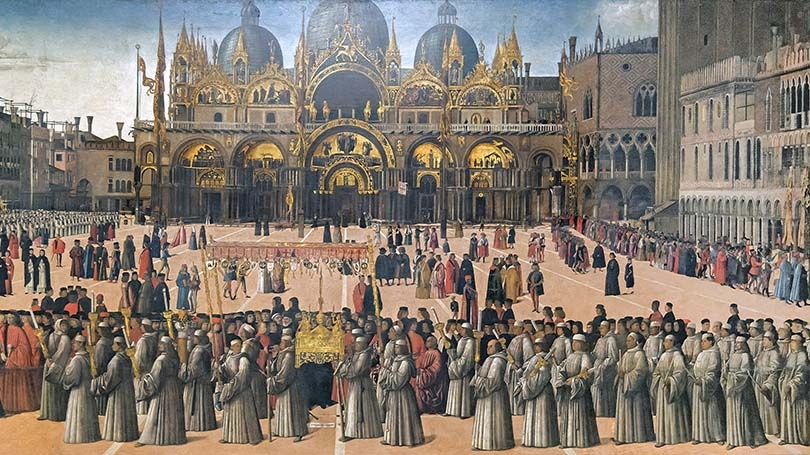
- Undergraduate
- Foreign Study Program
- News & Events
- People
Back to Top Nav
Back to Top Nav
Professors Christopher MacEvitt (Religion) and Cecilia Gaposchkin (History) have been granted a Dean of Arts and Sciences Conference Award for an upcoming conference, planned for October, 2022, Cities of Relics: Cult of the Saints, Urban Development, and Religious Life in the Middle Ages.
Conference Description:
Relics were fundamental in the creation of cities, the development of urban identity, and the structure of urban religious life. This conference proposes a cross-cultural study of the role of such 'holy objects' in fashioning urban communities across a broad swathe of European, Mediterranean and Middle Eastern cities, a scope which has never before been attempted. The saints whose relics a city possessed often defined a city's local identity, and relic processions were among the most important events of communal engagement throughout the long middle ages. For urban communities across the Mediterranean and the Middle East as well, relics and 'holy things' defined social relations and urban spaces, even across religious boundaries—the head of John the Baptist was one of the most important possessions of the Umayyad mosque in Damascus. Historians of individual cities have certainly appreciated the role their particular city's relics has played in its history. But we lack any kind of dedicated and comparative treatment or broader investigation. Relics played significantly different roles in episcopal cities, in communes (where they were invariably deployed in the spate of communal revolts that erupted after the year 1000), and royal cities. Furthermore, very little work has been done to compare the role of relics in Latin Christendom with other parts of the Christian world, or with the Islamic world, with which it overlapped and shared territory over time. Relics functioned differently in urban life in the later medieval period in the West. How did relics interact or compare with other nodes of sacred identity that held special meaning, such as icons, books, or liturgical instruments (sometimes discussed as 'secondary relics') within the urban environment? These questions have barely been studied in Eastern Christian traditions, the experience of which should be brought into comparative dialogue with what we know about the cities of Latin Christendom. More details to follow.